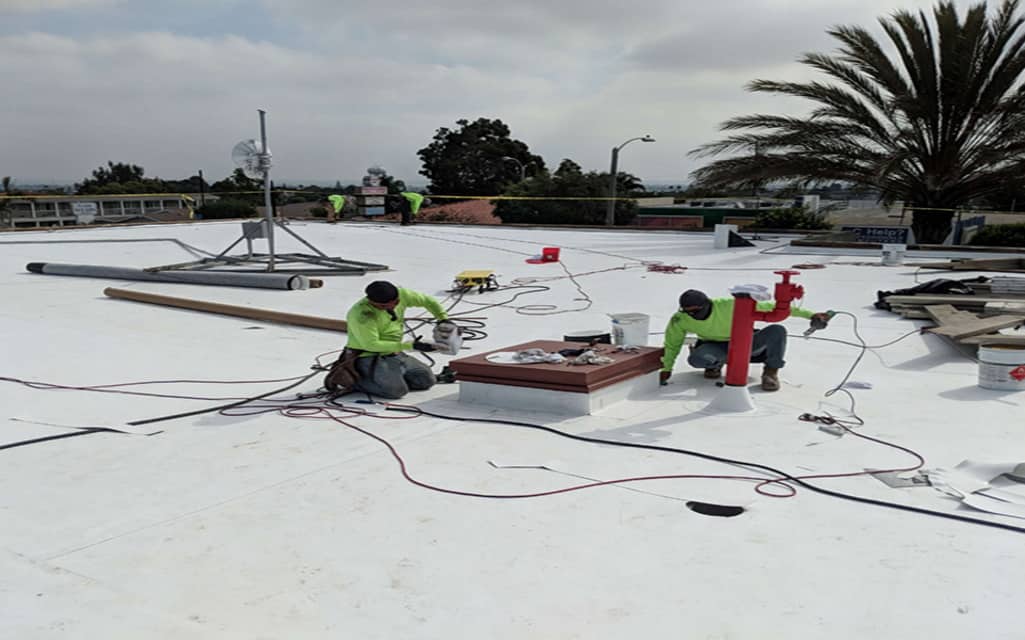It’s never fun to spend your hard-earned money on a new roof. Unfortunately, too many roof investments don’t live up to expectations. Why should you know how to maximize your roof’s potential?
The condition of the roof, the estimated lifespan of the roofing materials, the climate in your area, and any other peculiarities of your property and location should all be considered before you buy, even if you want to stay in that house a long time.
What Does Roof Maintenance Mean?
Maintaining the TPO roof’s health and integrity, as well as preventing or avoiding certain sorts of damage that would necessitate a repair or replacement, falls under the umbrella of roof maintenance.
Examining and cleaning the roof are just some of the services included in this upkeep. Regular roof care can extend the lifespan of your roof by years by preventing some types of damage and keeping you from having to replace your entire roof.
The typical homeowner may do the most important types of roof care, even if they don’t consider themselves handy. All they need is a ladder to get up on their roof safely. An experienced roofing specialist can also conduct this basic roof repair if you don’t feel comfortable stepping up on your home’s roof.
Material
It may go unmentioned, but the quality of your roof material will determine the duration of your roof. Asphalt shingles are the most often used roofing material in the United States because of their long lifespan and energy efficiency. The lifespan of an asphalt roof is considerably shorter than that of a tile or metal roof. As a result, when deciding on the best roofing material for your house, keep in mind the optimal lifespan of your roof.
Various types of roofs, ranging from commercial to domestic, are available. Building design, climate, and consumer desire play a role in using materials. For example, a roof’s lifespan depends on several circumstances, some of which you can manage. For everyone else, it’s purely a matter of chance.
Precipitation and Climate:
What you should focus on is the fact that these lifespans are averages. Be aware that life expectancy can be increased or decreased due to environmental factors such as climate. Canada’s climate is characterized by excessive rainfall and humidity. Some manufacturers indicate that their products have a 20% reduced life expectancy when exposed to conditions like these.
Pitch:
The slope of its roof determines the ability of a roof to shed water. Every resilient roofing system has an upper limit to how much water it can handle without weakening. Flat roofing systems are better suited for low-slope roofs since they are less likely to leak.
Exposure to the Sun:
Sunlight is wonderful for your health, but it can be detrimental to your roof if exposed to it for long periods. The accumulation of heat in your attic and on your roof can hasten the deterioration of your roofing materials. UV light can also hasten this process, resulting in cracks in some products. It’s advisable to go for a roofing material that can withstand the sun’s rays. UV-resistant coatings can also be applied to some goods.
Ventilation:
Ventilation is necessary for a variety of reasons. It adds to the room’s comfort and helps Shingles that aren’t properly ventilated can become brittle. Asphalt shingles, in particular, are prone to this problem.
As a result of a lack of ventilation, heat and moisture can build up in attics. Shingles can be damaged from the inside out by heat and dampness. The attic’s heat and moisture would be able to escape if it had adequate ventilation.
When to Replace a Roof?
Even if you haven’t experienced a significant disaster in the last 20 to 25 years, it’s likely that you should have your roof inspected to determine its present state and whether or not it needs to be patched, repaired, or even replaced.
As a precaution, be aware that if your new roof was put over an existing roof (as opposed to replacing the old roof altogether), the current roof may or may not be adequately vented, so you will want to check it as well. If your roof has accumulated many layers over the years, it may be time to replace it.
Conclusion:
Regarding your roof’s lifespan, you have little control over most aspects. Because of these variables, there is no way you can prevent your roof from being exposed. As a precaution, you should have your roof checked and repaired regularly by a skilled roofer.



